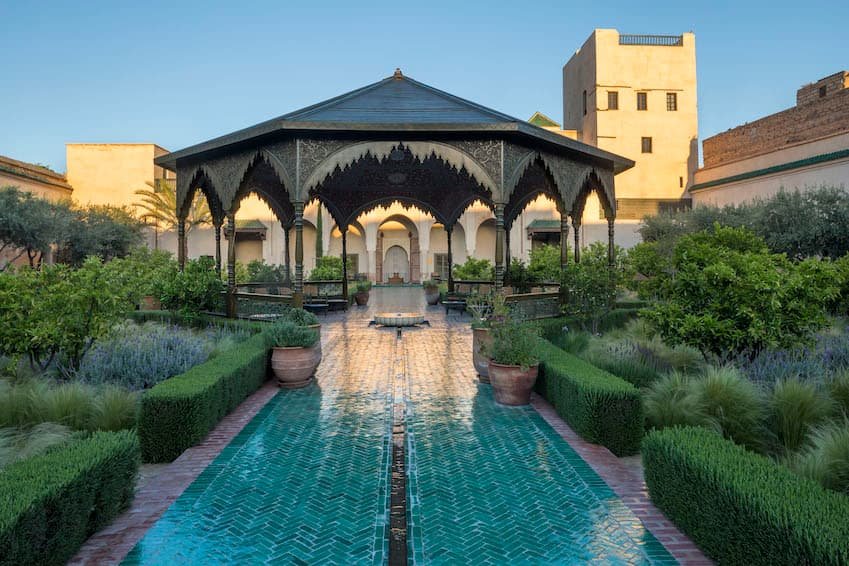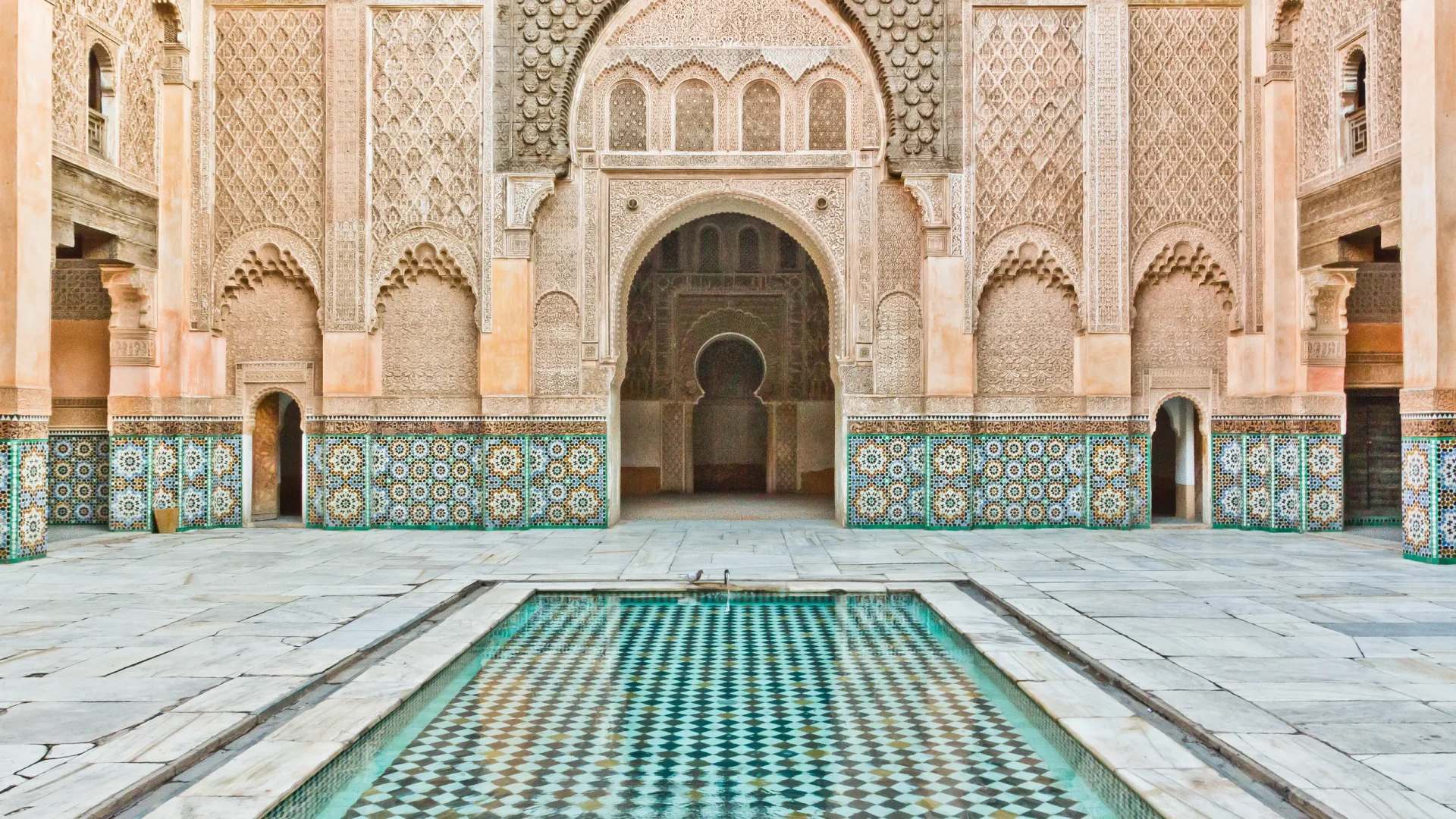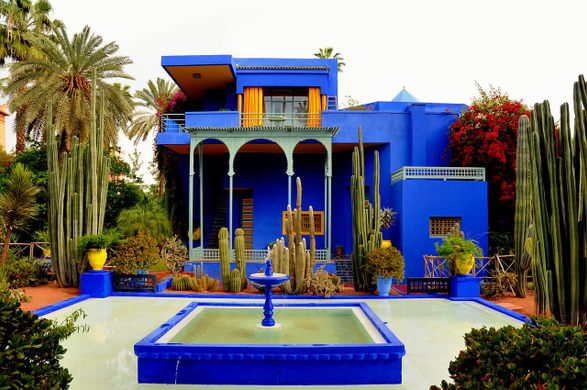Embark on a mesmerizing journey through the vibrant landscapes of
Marrakech is a city Located in the South of Morocco History dates back nearly to a thousand years, Morocco itself was named itself before it, Marrakech was founded by the Almoravids dynasty during 1070 as the capital of their empire it is Considered as one of the Imperial cities in Morocco beside ( Fez-Meknes and Rabat as the current Capital Of the Kingdom ) .The Marinids Dynasty Captured Marrakech in 1269 Marrakech as the Capital of the south. Marrakech, however, passed through a deep history throughout the history with different dynasties that rules and governed the Moroccan Kingdom such as Almohad Caliphate 1147, Mirindis 1269, the Saadian Sharifs in 1525 then to the Current Dynasty who took the chair in 17 century (1669) Although it served frequently as the residence of the Alawite sultans, Marrakesh was not their definitive capital, as Alawite sultans moved their courts frequently between various cities.
In the course of its history, Marrakesh achieved periods of great splendor, interrupted by repeated political struggles, military disorders, famine, plagues, and a couple of sacks. Much of it was rebuilt in the 19th century. It was conquered by French troops in 1912 and became part of the French protectorate of Morocco. It remained part of the Kingdom of Morocco after independence in 1956.
Throughout its history, Marrakesh has maintained a keen rivalry with Fez as the leading city in Morocco, and the country often fragmented politically into two halves, with Fez the capital of the north and Marrakesh the capital of the south. The choice of Rabat as the capital of modern Morocco can be seen as a compromise that afforded neither of the two rival cities primacy over the other.

The origin of its name is unclear: jamaa means "congregation" or "mosque" in Arabic, probably referring to a destroyed mosque on the site. Fnaʼ or fanâʼ can mean "death/extinction" or "a courtyard, space in front of a building". "finâʼ in Arabic commonly means "open area"; a straight translation would be "the gathering/congregation area". Other meanings could be "The assembly of death," or "The Mosque at the End of the World

The Koutoubia Mosque was built during the 12th Century by the Almohads Dynasty .however, the Koutoubia Mosque is the largest mosque in Marrakech. The mosque's name is also variably rendered as Jami' al-Kutubiyah, Kutubiya Mosque, Kutubiyyin Mosque, it is located in the southwest of the Medina Quarter of Marrakech near the famous largest square of Jemaa Elfna . The mosque's minaret Tower is about 77 meters(253ft) in height, includes a spire and orbs .the building of the Koutoubia mosque has some other similar building such as the Giralda of Seville and the Hassan Tower of Rabat, which was in the same period of the history, the later, Koutoubia Mosque is considered as an important monument and a task landmark of Marrakech.

The Bahia Palace Building dates back to the 19th Century, between ( 1866 and 1867 ) By Si Moussa. The Bahia name means “brilliance”. As in other buildings of the period in other countries, it was intended to capture the essence of the Islamic and Moroccan style. There is a 2-acre (8,000 m²) garden with rooms opening onto courtyards.
The beautiful building of “Bahia” consists of 150 Rooms, including the Harem section located just off the sun-filled court of honor. Having housed the Resident general during the French Protectorate era .it is actually one of the beautiful buildings and museums open to the public daily and has previously hosted events such as the Marrakech .

The riad-museum Le Jardin Secret is one of the largest and most ancient palaces of the medina of Marrakech. It is a place that has kept ancient structures intact that are of an extraordinary cultural value, linked to the art of gardens, architecture and Arab hydraulics. Popularly known as Riad Loukrissi, it has been the sumptuous residence of the Qaid U-Bihi who was the head of the Haha tribe. The riad rises up in the Mouassine quarter (on the main thoroughfare and but a few steps away from the Mouassine fountain and Mouassine Mosque), and comprises two large gardens and one of the highest towers of the medina. The museum provides you with a wealth of historical information about Marrakech's architecture, water, and gardens. You will also find a boutique, a bookshop and two cafes inside Le Jardin Secret. The cafes offer you up fresh, homemade products that you can eat in lush and peaceful settings.

The Ben Youssef Madrasa is an Islamic madrasa in Marrakesh, Morocco. Functioning today as a historical site, the Ben Youssef Madrasa was the largest Islamic college in Morocco at its height. The madrasa is named after the adjacent Ben Youssef Mosque founded by the Almoravid Sultan Ali ibn Yusuf.

Built in 1910, the Dar el Bacha, which means "house of the pasha", was the residence of Thami El Glaoui, who was given the title of pasha (roughly "governor" or other high official) of Marrakech by the Sultan Moulay Youssef in 1912.

The Majorelle Garden was designed by the French artist, Jacques Majorelle (1886-1962), son of the Art Nouveau ébéniste (cabinet-maker) of Nancy, Louis Majorelle. As a young aspiring painter, Jacques Majorelle was sent to Morocco in around 1917 to convalesce from a serious medical condition. After spending a short time in Casablanca, he travelled to Marrakech and like many of his contemporaries, fell in love with the vibrant colours and street life he found there

The Saadian Toms is located in Marrakech, Morocco, which dates back to the Saadian Dynasty .and exactly during the Ahmed Almansur (1578-1603) the tombs are mainly located on the south side of the Kasbah mosque. However, the tombs were rediscovered in 1917 by aerial photography and were renovated by the Beaux-arts service. The tombs have, because of the beauty of their decoration, been a major attraction for visitors of Marrakech. the Mausoleum comprises about sixty members of the Saadian dynasty, which originated in the Draa Valley, Among the graves of Ahmed Almansur and his family, the Building is constructed and composed of three rooms, the most knowledgeable and famous one is one of twelve columns. the room contains the grave of the Sultan's son .the whole building is constructed under the Andalusian Design with Islamic inflection since Islam arrived during the 7th Century, besides, the cedar wood that the designers used.
Embark on a mesmerizing journey through the vibrant landscapes of
Things to know about amazigh people Most important to know
